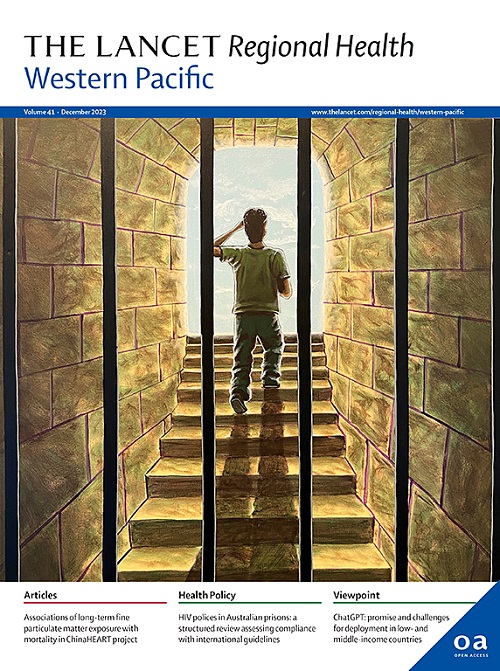Effectiveness of an intelligent endoscopic assistant device for detecting gastric neoplasms and its application conditions: a multi-center, randomized, controlled trial
IF 7.6
1区 医学
Q1 HEALTH CARE SCIENCES & SERVICES
引用次数: 0
Abstract
Evidence about the effect of AI systems on upper endoscopy in multi-center, randomized controlled trials is lacking. We aimed to explore whether AI can enhance gastric neoplasm detection and how AI can be applied better in real clinics.
Patients from 24 hospitals were allocated to receive AI-assisted esophagogastroduodenoscopy (EGD) or non-assisted EGD from December 21, 2021, to November 11, 2023 (pre-registered, ChiCTR2100054449). Primary outcome was detection rate of gastric neoplasms. Secondary outcomes included detection rate of early gastric cancer and precancerous conditions, biopsy rate, number of blind spots, and procedure/inspection time. We did modified intention-to-treat (m-ITT), per-protocol (PP) analysis, and an exploratory subgroup analysis.
A total of 30,540 patients were enrolled. In m-ITT cohort, the detection rate of gastric neoplasms under assistance was higher (RR 1·13, 1·00-1·28; 4·00 vs. 3·52%, p=0·04) with consistent results in the PP cohort. While after a pre-specified pathology review, numerically more gastric neoplasms were detected (RR 1·12, 0·92-1·38; 1·41 vs. 1·26%, p=0·28) with no statistical significance, and the result in PP analysis was consistent. Moreover, the system reduced the number of blind spots from 2·52 to 1·07 and increased the procedure/inspection time significantly. In exploratory subgroup analysis, potential benefits of AI in less experienced endoscopists and fatigue periods were detected. In the experimental group, the AI diagnosed the gastric adenocarcinoma with a sensitivity of 100%.
In conclusion, the ENDOANGEL-GC reliably contributed to the homogenization and standardization of endoscopic quality. The detection of gastric neoplasms was numerically improved without statistical significance. Our exploratory analysis seeking the optimal application condition of ENDOANGEL-GC found that AI might play a promising role among less experienced endoscopists and in labor-intensive areas, provides preliminary evidence for future researches.
求助全文
约1分钟内获得全文
求助全文
来源期刊

The Lancet Regional Health: Western Pacific
Medicine-Pediatrics, Perinatology and Child Health
CiteScore
8.80
自引率
2.80%
发文量
305
审稿时长
11 weeks
期刊介绍:
The Lancet Regional Health – Western Pacific, a gold open access journal, is an integral part of The Lancet's global initiative advocating for healthcare quality and access worldwide. It aims to advance clinical practice and health policy in the Western Pacific region, contributing to enhanced health outcomes. The journal publishes high-quality original research shedding light on clinical practice and health policy in the region. It also includes reviews, commentaries, and opinion pieces covering diverse regional health topics, such as infectious diseases, non-communicable diseases, child and adolescent health, maternal and reproductive health, aging health, mental health, the health workforce and systems, and health policy.
 求助内容:
求助内容: 应助结果提醒方式:
应助结果提醒方式:


